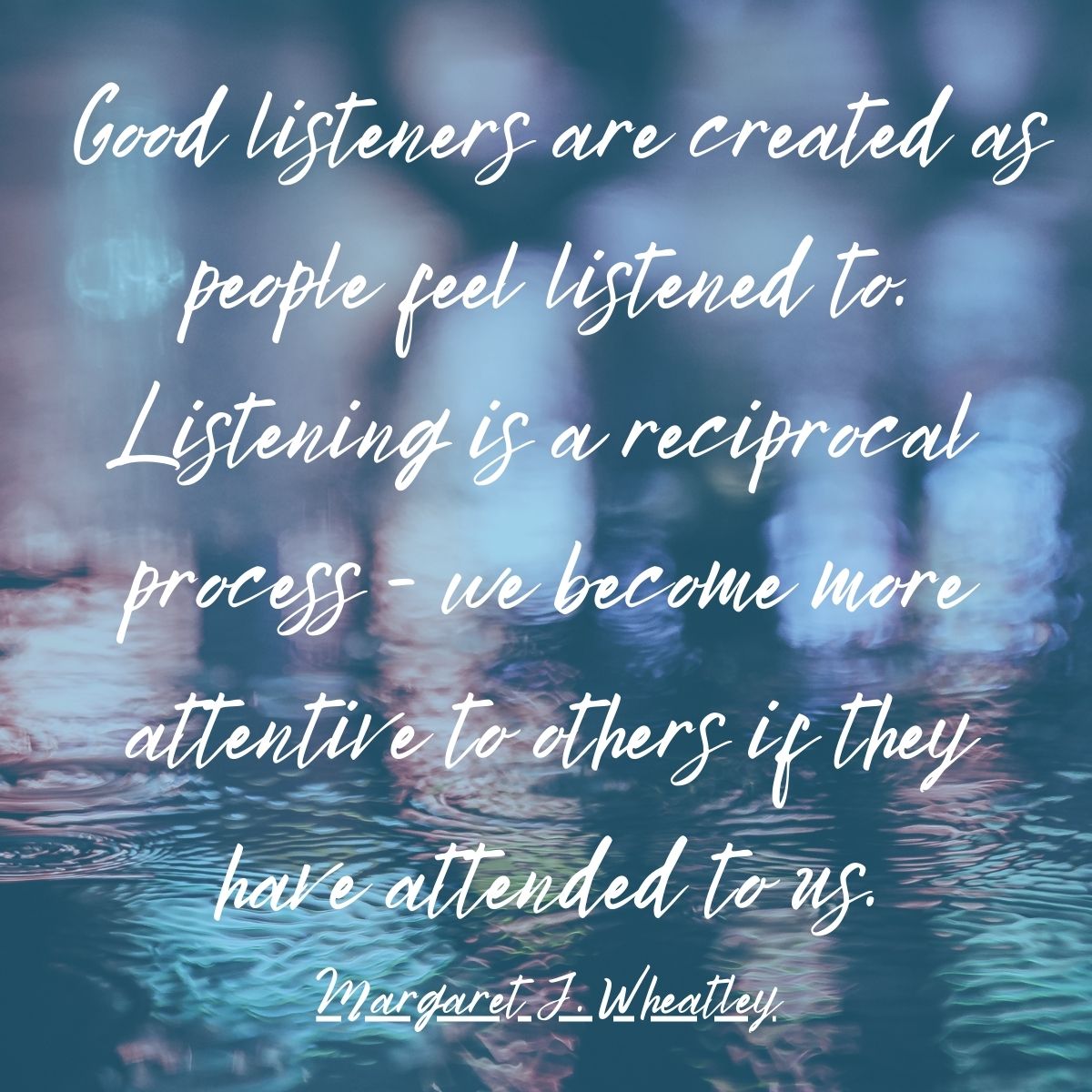
The tension between seeking to understand and being understood
"Seek first to understand, then to be understood." This principle, part of the canon of interpersonal effectiveness, is more than just a catchy phrase; it is the philosophical psychological and practical foundation on which meaningful communication is built, in our homes and schools and our professional settings.
In time where attention spans are short (current studies say since 2004 they have dropped from 180 seconds to 47 seconds), and everyone vies to be heard, the art of understanding before being understood seems almost countercultural - however we have a societal imperative to embrace this way of being.
The Imperative of Understanding in Communication
In the intricate dance of human interaction, the act of understanding demands a relinquishment of immediacy in expression for a deeper communion of minds. Within the day to day of professional discourse, this stance is rare; often, we worship at the altar of our own rhetoric rather than pilgrimage to the sanctum of shared truth, an approach which goes against the fundamental human need for connection and understanding.
Empathy and mindful listening have long been touted as crucial elements in creating a harmonious and collaborative environment, both in personal relationships and professional settings. From the art of negotiation to the practice of counseling, studies have consistently shown that these qualities can decrease conflict and promote understanding. It is evident that prioritising empathy is not simply a ‘nice to have’ , but rather an imperative for cultivating a workplace and society grounded in the principles of mutual respect and cooperation. This philosophical approach underscores the conviction that a deep-seated appreciation for another's perspective is the cornerstone upon which peaceful and progressive interactions – and societies - are built.
There are many benefits to this process of listening. The first is that good listeners are created as people feel listened to. Listening is a reciprocal process - we become more attentive to others if they have attended to us.
Margaret J. Wheatley (2010). “Finding Our Way: Leadership for an Uncertain Time p.239)
However, this understanding should not come at the expense of expressing one's own thoughts and needs. The dynamic tension that arises from balancing these two components of communication is where the true challenge lies.
The Importance of Empathy and Mindful Listening in Effective Communication
Empathy is integral to real communication—by genuinely seeking to see the world from another's vantage point, we not only gain deeper insight into their perspectives but also build a foundation for trust and mutual respect. When we engage in mindful listening, giving our full attention to the speaker without formulating a response or judgment, we foster an environment where authentic dialogue can flourish. This empathetic engagement can transform potential conflicts into opportunities for collaboration, where diverse ideas are not just heard but valued.
Toward a Balanced Approach
So how do we traverse this potentially fraught terrain of tense or mindless exchanges and transmute them into richly fruitful and productive dialogues? The magic key lies in deeply and thoughtfully engaging with others' ideas before advancing our own.
1 Practice Mindful Listening
Mindful listening means being fully present to the speaker, hearing their message, and responding thoughtfully. It's not merely waiting for your turn to speak; it's an earnest effort to grasp the gist of another's viewpoint.
2 Ask explorative Questions
Questions are the tools that pry open the shutters of someone's thought process. By asking questions, we demonstrate our interest in truly understanding the other person's perspective and provide them with the space to express themselves fully.
3 Reflect and Validate
Acknowledging the emotions and logic of another's message shows you've not only comprehended their point but also respected it. This doesn't mean agreement but rather conveys that you value their input as meaningful.
4 Share Your View Tactfully
Once you've made the effort to understand, it's time to articulate your perspective. Do so with the same respect you seek in return. Aim for a mutual exchange of insights rather than a monologue of demands.
By consistently incorporating these practices into our daily interactions, we cultivate a culture of mindful listening that fosters open communication, mutual respect, and meaningful connections. It takes effort.
Call to Action
This work isn't easy, but it's worthwhile if you want to create workplaces where people want to be; where they flourish because they feel heard and if you want to develop a reputation as a person who is collaborative, fairminded, and open to new ideas. If we are known as practicing self-awareness and empathy, recognising our biases and consciously working towards understanding others' viewpoint we will be actively fostering an environment where dialogue blooms. In this way we work to create organisational cultures that value and integrate diverse opinions, promoting a sense of inclusivity and collaboration among all members.
By making small but intentional changes in how we communicate with others we can balance that tension between understanding, and wanting to be understood.
Challenge yourself to be the change you wish to see.
It begins with us, one conversation at a time.
If you enjoyed this please feel free to comment and share.